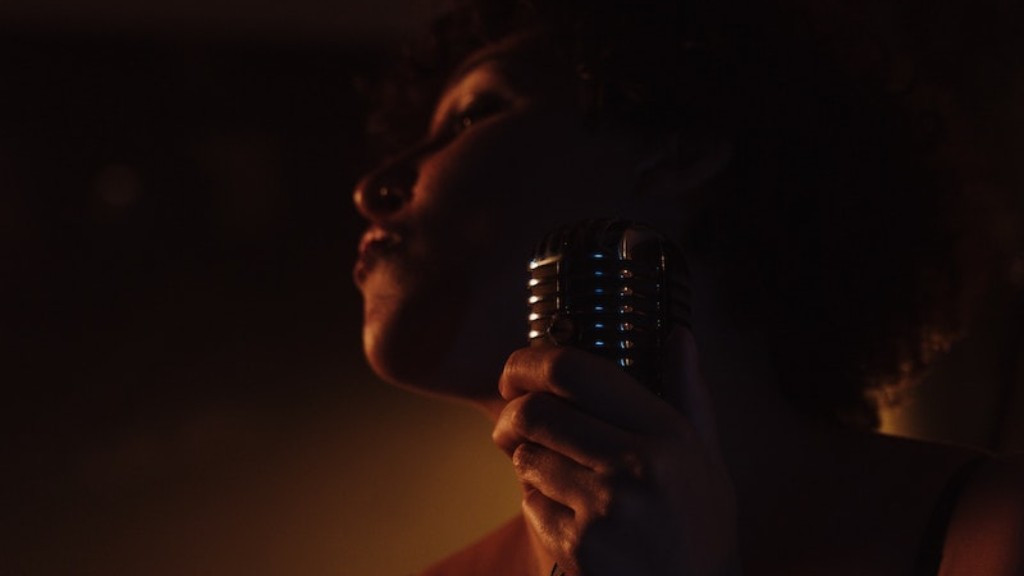If you want to add vibrato to your singing, there are a few things you can do. First, you need to make sure that you are using proper breath support. You should also practice using vibrato while you are singing. You can use a metronome to help you keep a consistent tempo. Start by singing a note and then vibrating your vocal cords. You should feel a pulsing sensation in your throat. Try to keep your vocal cords relaxed while you are vibrating them.
The best way to sing with vibrato is to relax the vocal cords and let them vibrate naturally. you may need to practice this technique to get the hang of it, but once you do, it will become second nature.
Is vibrato Natural or learned?
The vocal folds are a layer of tissue in the throat that vibrate when air passes through them. The pitch of the voice is determined by the tension of the vocal folds. When the vocal folds are under tension, they vibrate faster and produce a higher pitch. The opposite is also true: when the vocal folds are relaxed, they vibrate more slowly and produce a lower pitch.
The vocal folds are constantly changing tension in response to the needs of the body. When the body is under stress, the vocal folds tighten in order to protect the vocal cords. This tightening of the vocal folds is what produces the sound of vibrato.
The oscillations that occur in vibrato are the body’s reflexive response to mounting tension. The tension of the vocal folds is varied rhythmically, creating movement in pitch. This movement in pitch is what produces the characteristic sound of vibrato.
Vibrato is a natural response of the body to stress. It is a healthy function of the vocal cords and helps to protect the vocal cords from damage.
Vibrato is an important vocal technique that can add a lot of expression to your singing. To sing with vibrato, you need to be able to control your breath and support your vocal folds. Here are some tips to help you prepare to sing with vibrato:
1. Warm up to relax your airway. Your larynx and vocal folds are more likely to produce natural vibrato if they are relaxed.
2. Build up diaphragm control. Your diaphragm provides the breath support you need to sustain sung notes.
3. Do vocal falls while altering the pitch. This will help you develop the control you need to produce vibrato.
4. Practice regularly. The more you practice, the more control you will have over your vocal technique.
Can voice vibrato be learned
It is possible for everyone to learn how to sing with vibrato, as long as they are willing to put in the time and effort. I hope that some of the exercises in this book have helped you to learn how to sing with vibrato, but if they haven’t, don’t worry. Just keep practicing and eventually you will get it.
In practice, it is difficult for a singer or musical instrument player to achieve a pure vibrato or tremolo (where only the pitch or only the volume is varied), and variations in both pitch and volume will often be achieved at the same time. This is because the vocal cords or instrument strings vibrate at a set frequency, and it is difficult to change this frequency without also changing the amplitude (volume) of the vibration. Therefore, when a singer or musician wants to create a vibrato or tremolo effect, they will usually vary both the pitch and the volume simultaneously.
Do singers control their vibrato?
Vibrato is an important element of singing that should never be forced or faked. Skilled singers can control the speed and intensity of their vibrato at will, which allows them to be more versatile and expressive. The more control you have over your vibrato, the better you will be as a singer.
There are a few things to keep in mind when it comes to vibrato. First, the proper movement of the hand is back and forth. Or, in other words, back toward the scroll and then forward to the original pitch of the note. Twisting the hand side to side, up and down, or any combination of these movements is not the best way to achieve vibrato. Second, it’s important to use the muscles in your forearm, not just your hand, to create the vibrato movement. This will help ensure a smooth, even vibrato. Finally, make sure to practice! The more you do it, the better you’ll get at it.
Why is vibrato so hard?
Vibrato is difficult because it requires a lot of control and coordination. The fingers have to be able to move independently from each other and at the same time, be able to apply pressure evenly across the fingerboard. It takes a lot of practice to develop the muscle memory and coordination required for vibrato.
Laryngeal vibrato is a type of vocal vibrato that is produced by moving the larynx up and down. This movement creates a variation in pitch, which is caused by the vocal cords producing the pitch and the hypopharynx producing the speed. Laryngeal vibrato is most likely produced in a combination of levels from 1-4.
How do I develop my vibrato
To get vibrato in your voice, you need to slightly back off the tension applied to your vocal chords. This will cause them to relax slightly and begin to oscillate between two pitches quickly, creating the vibrato voice effect.
Vibrato is an important element of good violin technique. It adds expression to the music and makes the sound more interesting. It is not difficult to learn, but it does take some practice.
The key to developing a good vibrato is consistency. Even if you can only spare a few minutes a day, it is important to practice regularly. It usually takes one to two years to perfect the vibrato and be able to adjust it to the music you make.
Why do old singers use so much vibrato?
There are many different techniques that can help you create vibrato in your voice, but the key is to find what works best for you. Remember to warm up your voice before practicing vibrato, and to focus on vibrating from your diaphragm rather than your throat. With a little practice, you’ll be able to create beautiful vibrato in your voice that will help you sound more professional and connect with your audience.
A trill is a type of sound that is created by the tongue or lips oscillating. It is generally done as a vocal exercise, to warm up the voice. Natural vibrato is related to the relaxed oscillations of the vocal folds (mucosa), where the pitch you sing goes above and below the center as the air passes through them at an even pace.
Is it better to sing with or without vibrato
Singing with vibrato gives your voice a richer, fuller sound and more projection. vibrato also helps to keep your voice healthy by providing it with the movement and exercise it needs.
Vibrato is a technique used by singers and musicians to create a richer, fuller sound. It is achieved by rapidly shaking the head or body, or by rapidly moving the hand back and forth on the string or wind instrument. By doing this, the pitch and frequency of the note is slightly shifted, which creates a more robust sound. Additionally, vibrato can help singers project their voices further and reach the back of a concert hall with ease.
Do singers cringe at their own voice?
It is normal for a singer to dislike the sound of their voice when they hear it on recording. Many people don’t like the sound of their voice when they hear it on a recording and singers are definitely not alone in this. Hearing your own voice can make you cringe, but it is normal.
It’s not just singers who hear themselves sing, but they’re constantly assessing the sounds they make during singing in order to bring those phonations into accord with the tonal ideal to which they have given their allegiance.
Final Words
In order to sing with vibrato, you will need to use your diaphragm to control your breath and focus on keeping a steady stream of air flowing. You should also relax your throat muscles and allow your vocal cords to vibrate naturally. You can practice vibrato by singing sustained notes on vowel sounds such as “ah” or “oh.” To produce vibrato, you will need to slightly vary the pressure of your breath and the tension of your vocal cords. As you exhale, you should feel your stomach muscles engage. To produce a deeper vibrato, you can try singing on a lower note.
The best way to learn how to sing with vibrato is to take some singing lessons from a professional vocal coach. This way, you will be able to learn the proper technique and how to apply it to your own singing.



